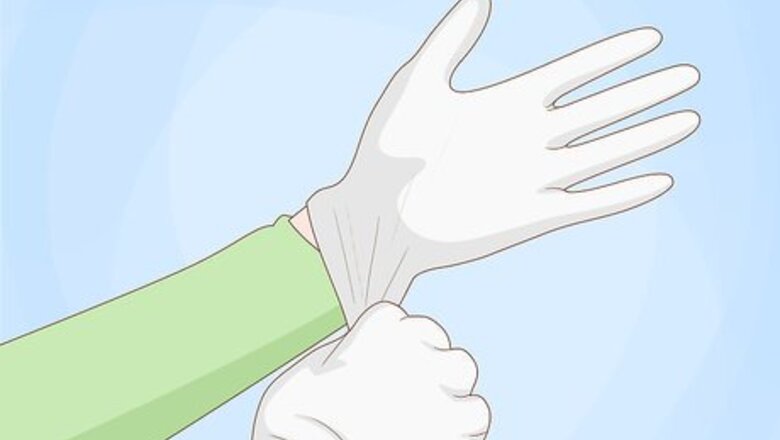
views
X
Research source
In order to harvest these flavorful nuts correctly, you’ll need to wait until early fall and gather them when they are ripe. Once you’ve collected the nuts, remove the tough hulls and dry the nuts in their shells before cracking them open to get the nutmeat.
Gathering the Walnuts
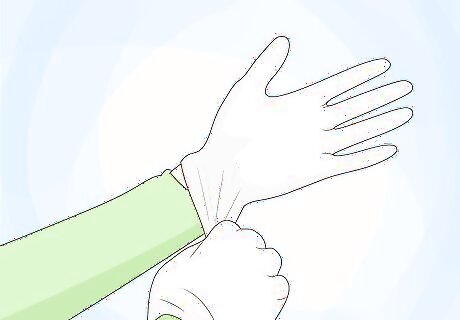
Wear gloves to protect your hands from stains. The hulls of black walnuts contain an inky substance that will easily stain your skin and clothing. Before harvesting or working with the nuts, put on some heavy duty gardening gloves to protect your hands. You may also wish to wear a helmet to protect your head from falling nuts.
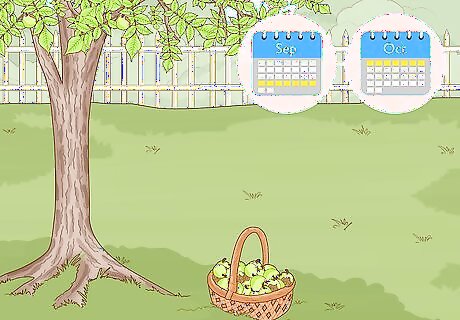
Harvest black walnuts in late September or early October. Black walnuts start to become ripe in early fall. Be on the lookout for ripe nuts at the end of September or the first few weeks of October. Once the nuts are in season, they’ll begin falling off the trees.
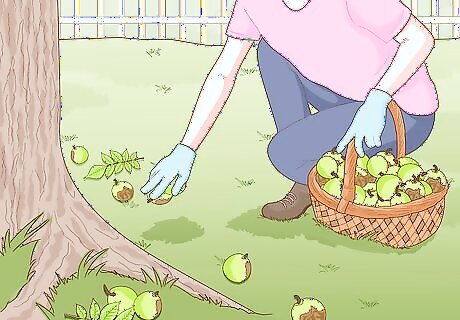
Collect the nuts while they are still green. Mature black walnuts have an outer hull that is green and slightly softened. Gather the nuts when they’re green to ensure that the nutmeat is still fresh and not too bitter or rancid-tasting. The nuts will have a yellowish-green color when they’re mature. Don’t wait until they turn brown or become mottled.
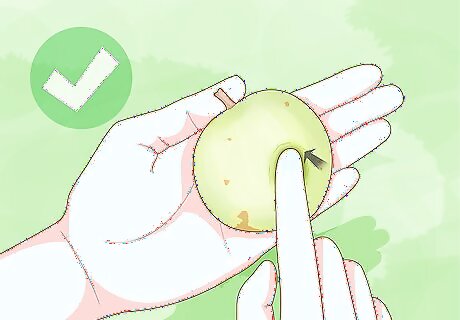
Do a “dent test” to see if the hull has softened. If the walnut is mature, it will feel slightly soft to the touch. Grab a walnut and push on the hull with your thumb. If you’re able to leave a dent in the hull, the nut is ready for harvest.Warning: As black walnut hulls begin to decompose, they can become infected with a toxic mold that is hazardous to livestock, dogs, and humans. Avoid eating walnuts taken from partially decayed hulls.
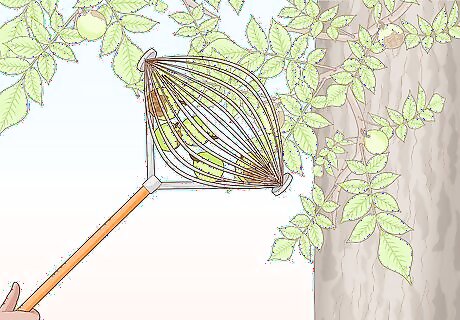
Gather the nuts directly from the tree if possible. Black walnuts are usually best when you harvest them straight from the tree, before they have a chance to fall to the ground. However, it’s often easiest to gather nuts that have already fallen. Make sure to gather fallen nuts quickly, before they have a chance to develop mold or be eaten by animals. You can also gather mature nuts from the tree by shaking the tree or knocking the nuts down with a pole.
Removing the Hulls
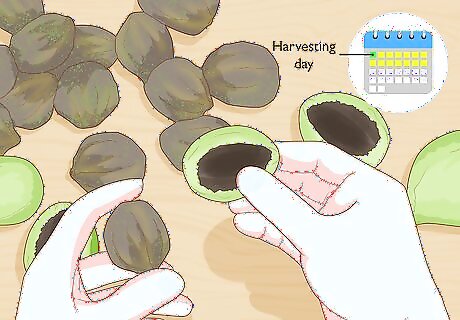
Remove the hulls immediately after harvest if possible. The longer the walnuts stay in their hulls, the more bitter the nutmeats will become. For the best possible flavor and quality, remove the hulls no more than 2 weeks after you harvest the nuts. Nuts that are allowed to remain in the hulls too long will turn black and develop a rancid taste.
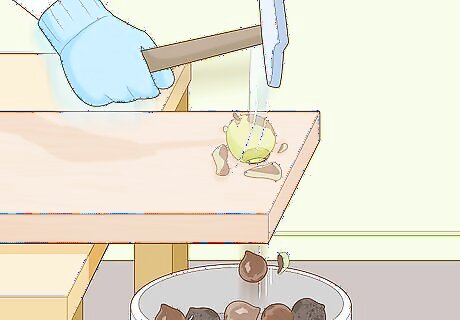
Take off individual hulls with the plywood method. The hulls of black walnuts are difficult to remove. If you only need to hull a few nuts at a time, try using a hammer to force the nuts through a hole in a piece of heavy plywood. Drill a hole that is 1.75 inches (4.4 cm) in diameter in the board. Hit the nuts hard with the hammer to drive them through, leaving the hull behind.Warning: Always wear gloves when removing walnut hulls. You may also want to wear old clothes and lay down newspaper or a drop cloth to protect your work area from stains. You can also try rolling the nut under a heavy board or boot to get the hull off.
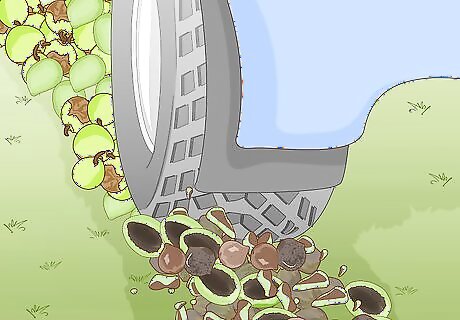
Drive over the nuts on a gravel driveway to remove multiple hulls. If you’re hulling multiple walnuts, pile them up in the middle of a driveway. Drive over them several times in a car or truck so that the hulls loosen and slip off. This method should cause the hulls to come off but leave the hard, inner shells intact.
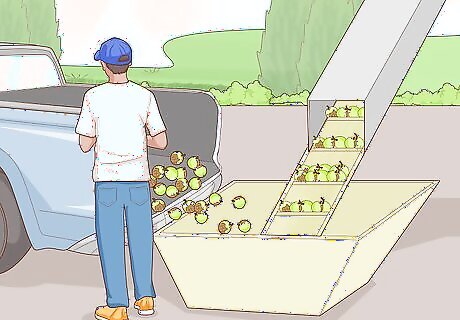
Find a local hulling station if you have a large harvest of walnuts. If you have a major harvest of walnuts and don’t want to deal with hulling them all yourself, some states have hulling stations where you can bring your haul. The operators of these hulling stations will process the walnuts for you in a mechanical hulling machine. To find a hulling station near you, try doing a search with terms like “black walnut hulling stations in Missouri.” Most hulling stations are owned by a parent company that will purchase nuts from local harvesters. Harvesting nuts and selling them to hulling stations is a good way to earn a side income if there are lots of black walnut trees in your area.
Drying and Shelling the Nuts
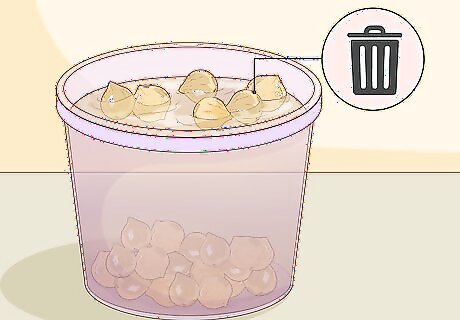
Wash the hulled nuts in a bucket of water. After you remove the hulls, place the nuts, still in their shells, in a bucket of water. This will help rinse away juices, residue, and loose fibers from the hull. Discard any nuts that float to the surface. The good nuts should sink in water.
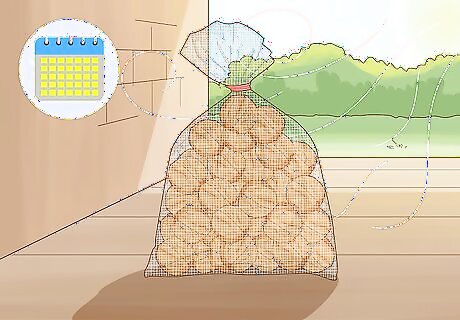
Dry the nuts in a mesh bag for 5 weeks. Once you’ve rinsed the nuts, place them in a loosely woven bag, such as an onion bag, to allow airflow. Hang them up in a well-ventilated outdoor area, out of direct sunlight and sheltered from rain. The nuts should be dry in about 5 weeks. Alternatively, you can spread the nuts out in a thin layer on the ground to dry. However, you’ll need to keep them someplace where they’ll be protected from animals and the elements, such as a screened-in porch. You can tell when the nuts are dry enough by shaking the shells. You should hear the nutmeat rattling inside.
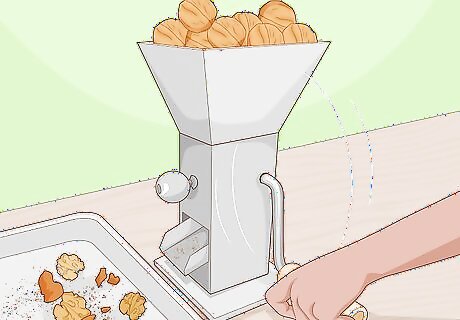
Crack the shells with a heavy-duty cracker. Black walnut shells are very difficult to crack. Once the nuts are dry, you can open them using a heavy-duty pressure cracker, which is a type of nutcracker that works similarly to a vise. You may also be able to crack the nuts with a hammer, a heavy board, or a vise grip. After you crack the nut, pick out the meat with a nutpick.Tip: Try softening the shells first by soaking them in water for 1-2 hours. Place the moist nuts in an airtight container overnight before cracking them. You can soften the shells a little more by soaking them in hot water again right before you crack them. You probably won’t be able to crack black walnuts with a regular hand-held nutcracker. To crack multiple nuts at once, place up to 100 of them in a burlap bag and hit the bag with a mallet several times to crack the shells. You’ll need to separate the nut fragments from the cracked shells by hand. If you don’t want to crack the nuts right away, put them in a bag and store them at 32–40 °F (0–4 °C).
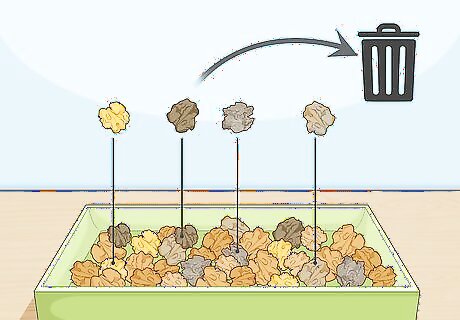
Discard any damaged or rotten nuts. As you crack the nuts, examine the shells and nutmeat carefully. Throw away any nuts with shells that are already cracked or damaged, since they may be infected with mold or microorganisms. Discard any nutmeat that is black, bright yellow, or streaked with blue, since these are signs of infection. Healthy black walnut kernels should range from light to dark brown on the outside, and off-white or cream colored on the inside.
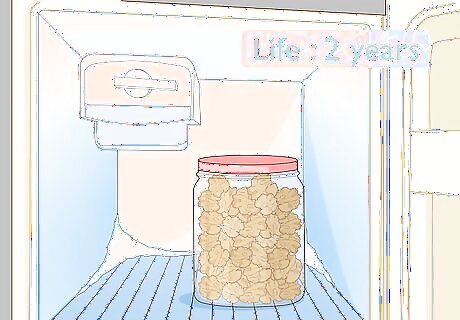
Store the nutmeat in your fridge or freezer. After you get the nuts out of the shells, let the meat dry for 1-2 days, then place it in an airtight container. The nuts will stay fresh in your refrigerator for up to a year, and will keep for 2 years or longer in your freezer. If you store the nuts in your freezer, place them in jars or freezer bags labeled with the date. You can also use the nuts immediately after you crack them, if you prefer.




















Comments
0 comment